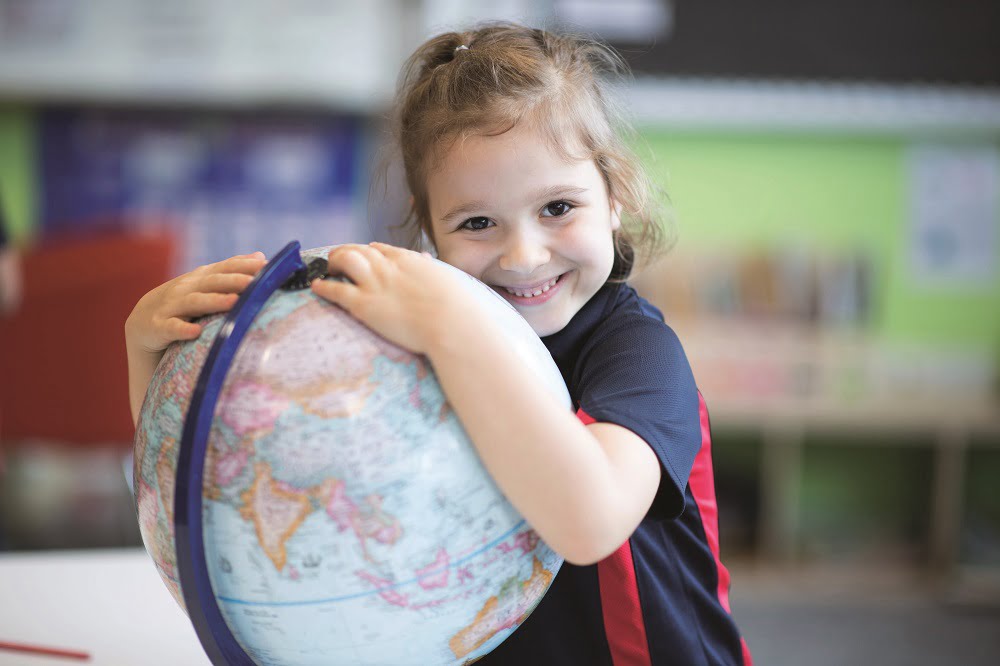
GEMS World Academy (Singapore)
“Our school has implemented a series of initiatives that aim to reduce its environmental footprint and encourage our students to be more aware of the environment and make a difference in our local and overseas communities, so that we have a sustainable planet to share,” says Sebastien Barnard, Head of Admissions and Marketing.
How green is your school?
We are an environmentally responsible campus. A great significance has also been placed on the reduction of energy consumption through campus design measures – such as reducing the amount of air conditioned spaces with natural ventilation and shade and providing more natural light to cut back on artificial lighting.
What are your students doing?
Our students are really pushing the environmental and recycling projects at GEMS. They’re tracking their plastic consumption at home and at school and trying to come up with innovative solutions on reducing single-use plastic and using water wisely. Our students also organise monthly environmental events, such as beach clean-ups.
How do you recycle?
Recycling bins have been placed throughout the campus and GEMS educators always look for new innovative ideas to reduce our negative impact on the environment. They recycle, re-purpose and sometimes even create art and design pieces from waste. We’ve turned carton boxes into stage backdrops, pop tabs into bags, wooden cable holders into tables, and old magazines into art. Our new Design Centre has been equipped with smart recycling facilities to raise awareness of plastic pollution, resource management and our responsibility to recycle and protect our environment.
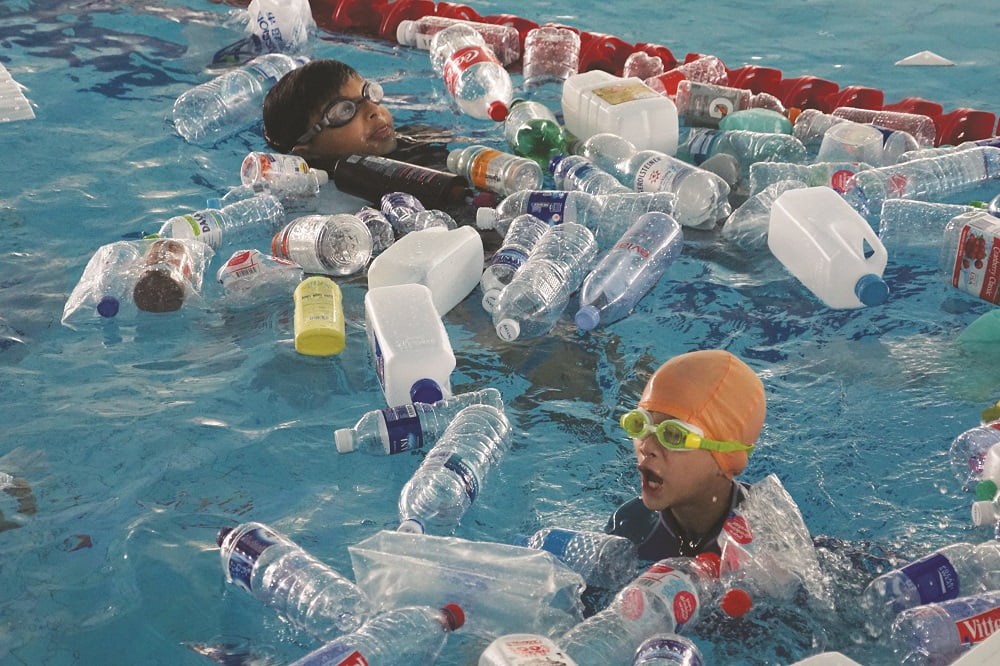
What yearly environmental programs do you have?
Each year at GEMS students are invited to participate in a ‘Week-Without-Walls’ experience, designed to offer opportunities outside of the classroom. Last year, our students travelled to South Vietnam, Laos and Cambodia. They worked alongside the local community in a range of sustainability activities and had the opportunity to participate in other local service projects and cultural activities. We also teach valuable lessons about pollution in the ocean by using our Olympic-size swimming pool as a plastic dump before a big swim-a-thon. This provocation activity helps our students to think about how we share finite resources with other people and living things.
What other student-led initiatives do you have?
Recently our students organised an art installation, Way to the Water, to raise awareness and funds for those in need of clean water. All the funds have been donated to organisations such as UNICEF and Water for South Sudan.
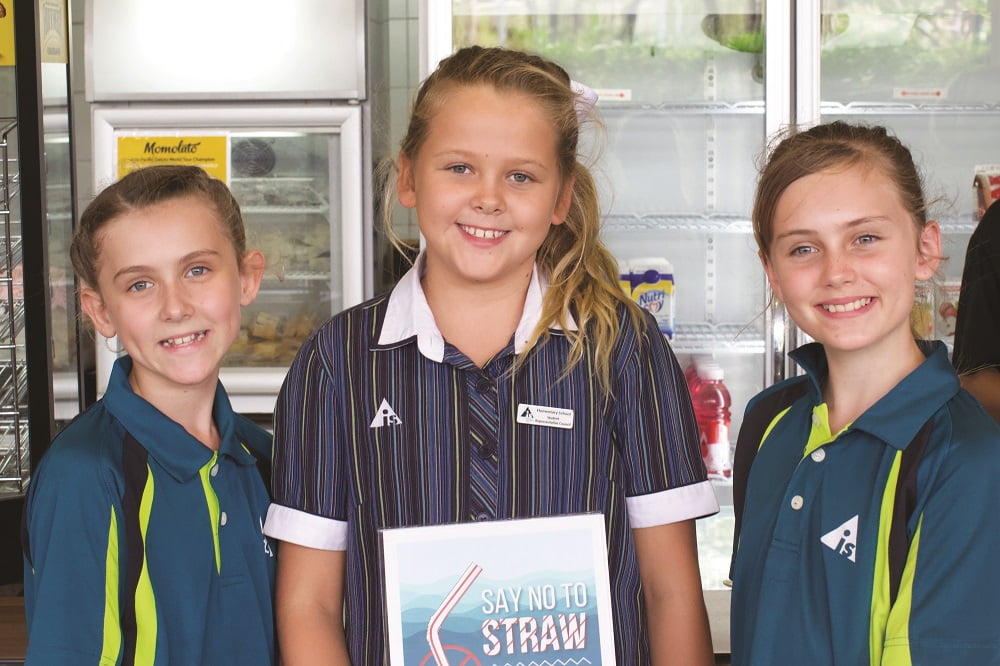
Australian International School (AIS)
“Green is a very popular colour at the Australian International School,” says Jennifer Burgess – Senior Communications Manager. “Not only does it feature on the logo and uniform, but increasingly it is being referenced in the classrooms, playgrounds and boardrooms, as the school focuses on how it can become greener or environmentally focused.”
tudent-led straw ban
Zoey, a Year 5 AIS Student, was inspired by her teacher’s messages about the harmful impact of plastic on the environment. Her goal was to convince the school canteen to stop providing plastic straws with drink purchases. After researching the detrimental impact of straws online, she shared this information with her friends, who joined the quest. Together they spoke at school assemblies and collaborated with the canteen providers for AIS – Chartwells – to eliminate straws. The initiative was successfully introduced and implemented at the school. Zoey and her friends, Abbey and Jasmine are now continuing their campaign by focusing on alternatives to boxed drinks with attached straws.
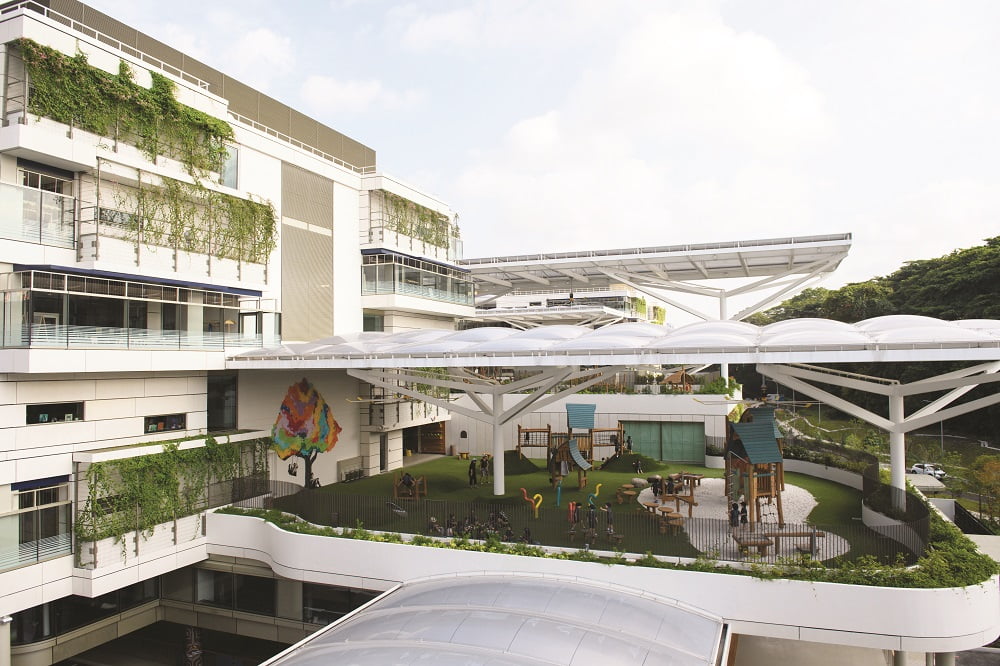
Solar stars
In 2018, AIS installed 330 rooftop solar panels at its campus in Lorong Chuan, with an additional 1385 panels to be installed later this year. When complete, the panels will generate about 704 MWh of solar electricity yearly, which will be fully available on the open energy market. The project is estimated to offset about 303 metric tons of carbon.
AIS also intend to develop a new program to educate students about green energy. As part of this program, the school hopes to display a live-feed dashboard that tracks the energy produced by the solar panels, which will support its continued commitment to raising awareness about clean energy. “We are extremely happy to be making these efforts towards developing a green and sustainable campus, while empowering students to play an active role in tackling real-world environmental issues”, says Mr Andre Casson, Head of School.
Green building initiatives were used at The Early Learning Village, including a rainwater harvesting system which is used for irrigation. Water conservation was a focus when selecting water taps and toilets and there are motion light sensors in all the rooms, so lights turn off when the rooms aren’t in use. The building management system also automatically manages the temperature within the rooms, based on usage.
Combined with the green walls on the exterior of the building, which cool the building down naturally, the Early Learning Village is a masterclass in green design which is why it also holds a Greenmark certification.
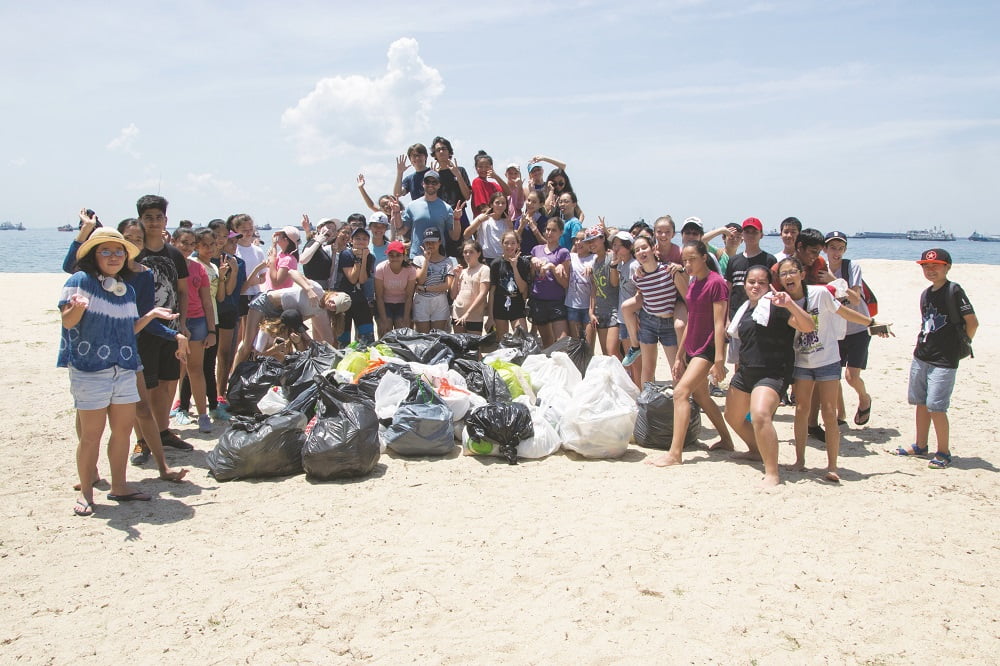
Canadian International School (CIS)
“We are a World Wildlife Fund (WWF) Silver Flag Eco School and have prioritised sustainability in our newest strategic plan,” says Michael Broadhead, CIS teacher and Lakeside campus sustainability lead. “We now have a carbon neutral electricity supplier and we’re working on encouraging more zero waste, plant-based, carbon positive initiatives. These living habits are key to a sustainable future.”
What recycling do you have?
We have paper recycling in every classroom, and plastics and metal collection points in different areas of the school. Our design department is constantly finding ways to reuse materials for student projects.
What green spaces do you have?
Our Outdoor Discovery Garden is a beautiful green space for our primary students to interact with nature. We also have a rooftop garden for secondary students to develop their green thumbs.
How do you educate students?
The environment and sustainability is incorporated and taught in many parts of our curriculum. In the IB Diploma Programme (DP) we offer Environmental Systems and Societies (ESS) as a course.
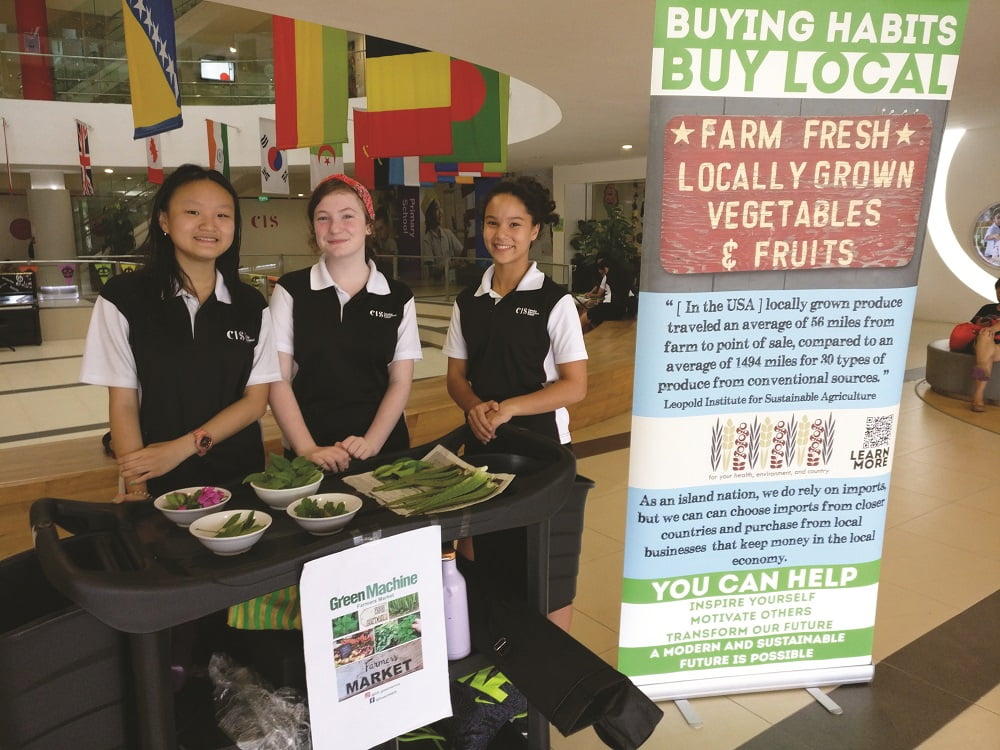
What yearly environmental programs do you have?
Each year our secondary school students participate in Excursion Week, taking part in environmental projects around Asia. We’ve helped with mangrove planting, building safe water gardens, coral planting and more. Our Biology and ESS diploma program students also do a week of on-site learning in Malaysia, collecting scientific data for their coursework. In our primary school, we have Open Minds, hands on outdoor learning experiences in settings such as Fort Canning, Sungei Buloh Wetlands Reserve and the Eco Garden at the Science Centre.
How does the school deal with food waste?
Our canteen and plate food waste is collected for a co-digestion energy project with the NEA. Volunteer students have set up composting bins in certain areas of the school to collect waste from snacks.
How do you reduce plastic and waste?
Our food has always been served on reusables. Straws and sandwich boxes were phased out in January and we’ll be phasing out disposable cups by April. Our goal as a school is to be zero waste in the future.
Note: Questions relate to CIS Lakeside campus only
Local schools are also making strides in green initiatives, check out the
School Green Awards run by the Singapore Environment Council for more info. sec.org.sg/sga/








